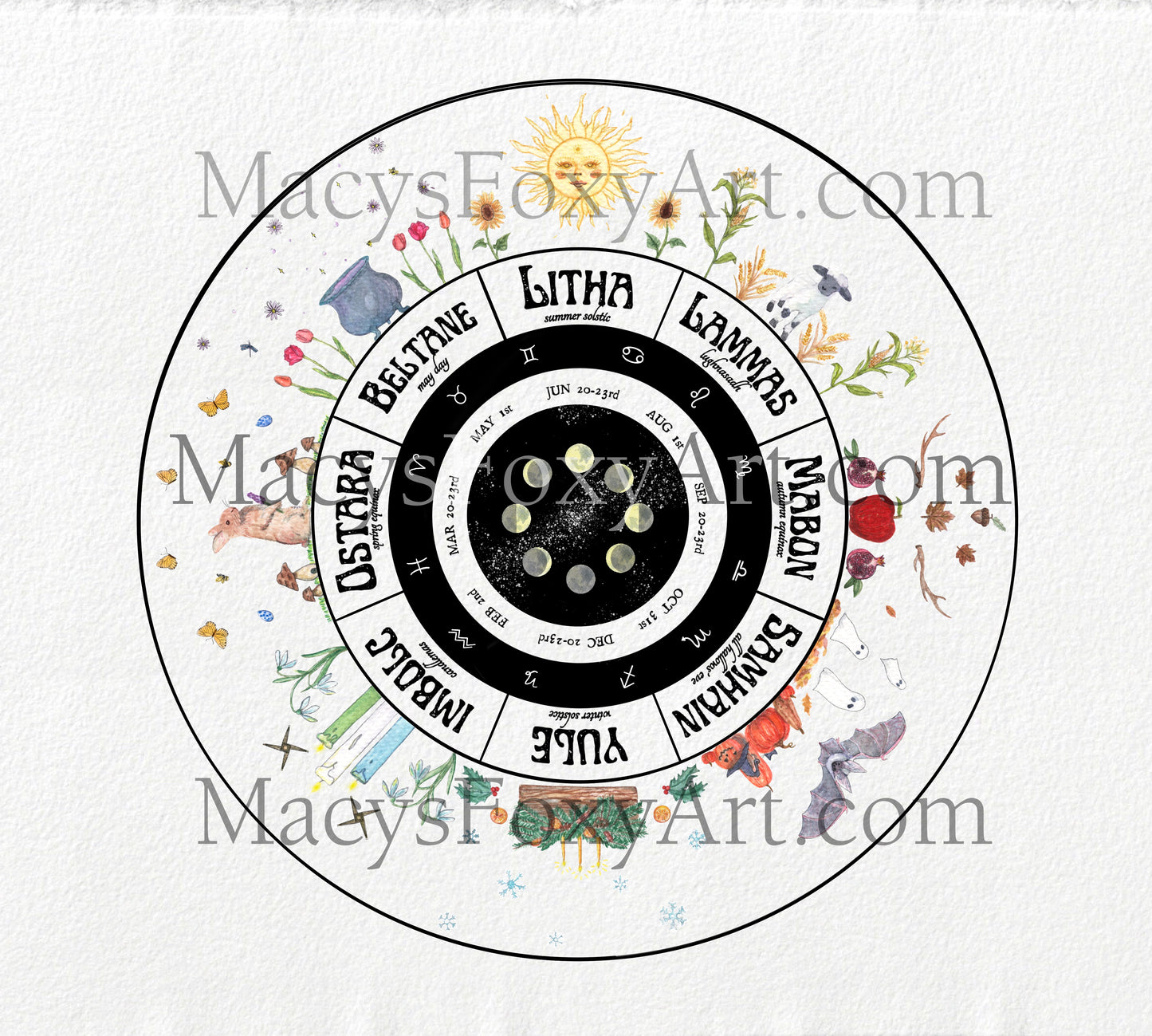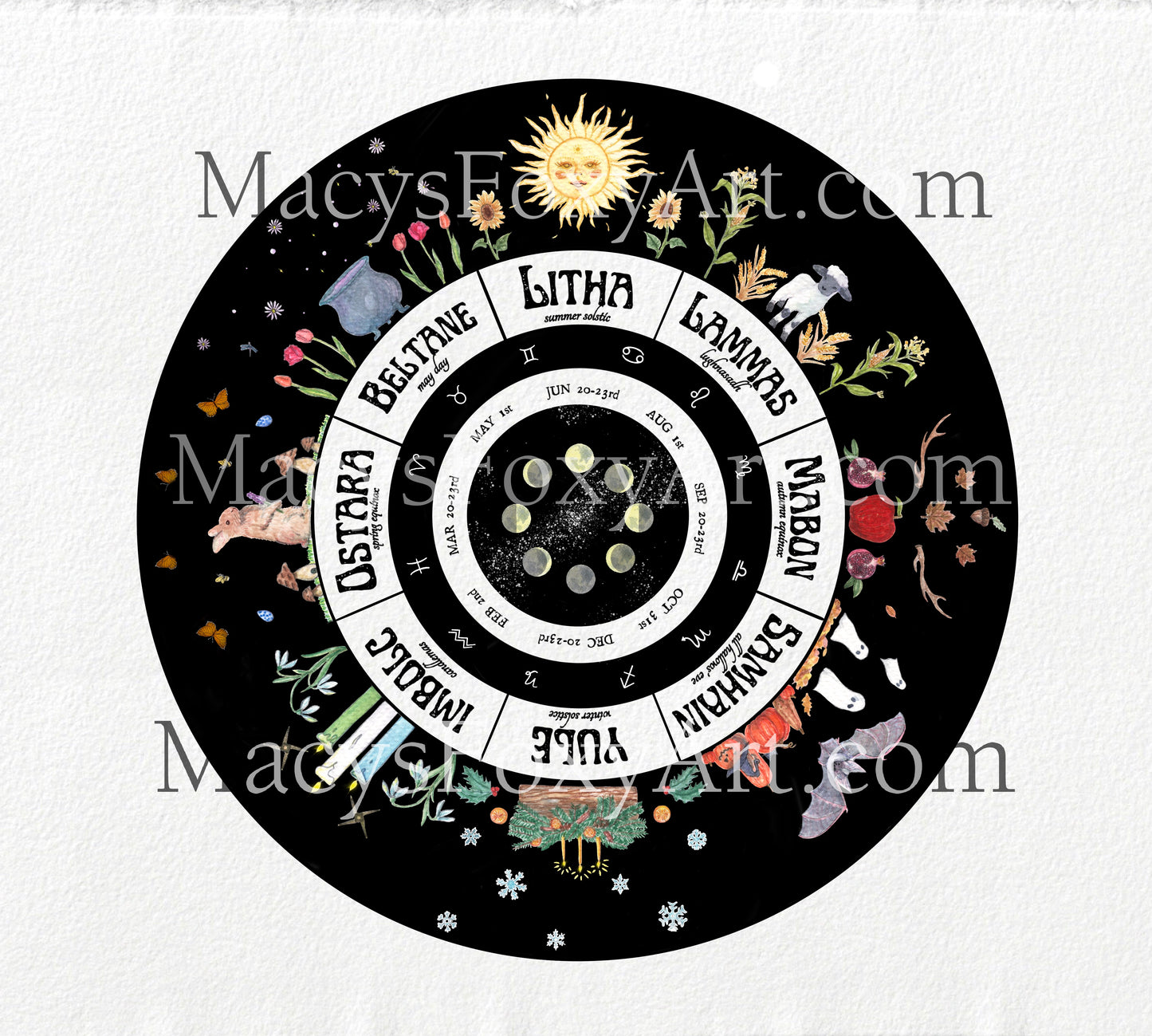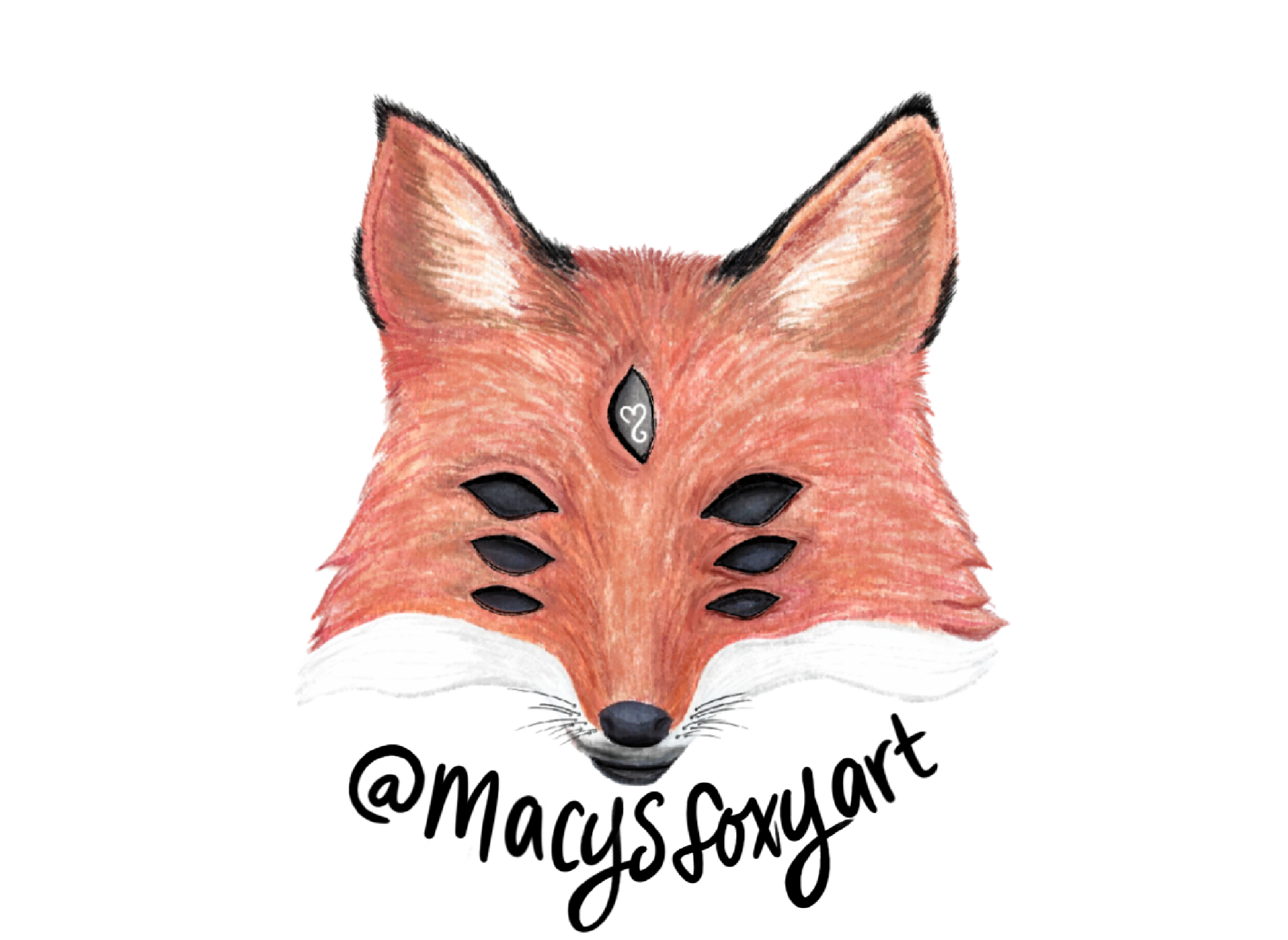Macysfoxyart
Wheel of the Year
Wheel of the Year
Couldn't load pickup availability
Welcome, fellow seekers of ancient wisdom and connection with the cycles of nature! In the realms of paganism, the Wheel of the Year stands as a sacred calendar, guiding us through the changing seasons and the ebb and flow of life's energies. Join us on a mystical journey as we explore the Pagan holidays that make up this sacred wheel, each marking a unique moment in the natural cycle.
The Wheel of the Year:
The Wheel of the Year is a sacred circle that divides the solar year into eight distinct holidays, known as Sabbats. These Sabbats are further categorized into two groups: the Greater Sabbats, which represent the solstices and equinoxes, and the Lesser Sabbats, which mark the points between them.
-
Samhain (October 31 - November 1): Samhain, the Celtic New Year, marks the end of the harvest season and the beginning of winter. It is a time when the veil between the physical and spiritual worlds is believed to be thin, making it ideal for divination and communication with ancestors.
-
Yule (December 20-23): The Winter Solstice, or Yule, celebrates the rebirth of the sun. As the longest night of the year, it symbolizes the return of light and the promise of renewed life. Many traditions incorporate the Yule log and evergreen decorations to honor the cycle of life.
-
Imbolc (February 1-2): Imbolc, or Brigid's Day, heralds the first signs of spring. It is a time to honor the Celtic goddess Brigid and embrace the returning warmth of the sun. Candlemas, a common Christianized celebration, also occurs around this time.
-
Ostara (March 20-23): Ostara, the Spring Equinox, celebrates the balance between day and night. As nature awakens, we honor the fertility goddess Ostara and embrace themes of growth, rebirth, and new beginnings.
-
Beltane (April 30 - May 1): Beltane marks the beginning of the warmer season and is a festival of fertility, fire, and passion. Traditionally celebrated with maypole dancing and bonfires, Beltane embraces the union of the Earth and the divine.
-
Litha (June 20-23): Litha, the Summer Solstice, is a time of abundant light and the peak of the sun's power. It invites us to celebrate the warmth of the season and express gratitude for the bounties of the Earth.
-
Lammas/Lughnasadh (August 1-2): Lammas, or Lughnasadh, marks the first harvest and is dedicated to the Celtic god Lugh. It is a time to reap what has been sown, give thanks for abundance, and reflect on the cycle of life.
-
Mabon (September 20-23): Mabon, the Autumn Equinox, signifies the balance between light and darkness. It's a time to express gratitude for the harvest, reflect on the past year, and prepare for the approaching winter.
As we navigate the Wheel of the Year, we are reminded of the interconnectedness of all life and the cyclical nature of existence. Whether you are a seasoned practitioner or a curious soul, these Pagan holidays offer opportunities for reflection, celebration, and connection with the natural world. Embrace the magic of the Wheel of the Year and may it guide you on your spiritual journey. Blessed be!


-
Shipping
Share the details of your shipping policy.
-
Returns
Share the details of your return policy.


